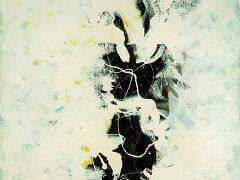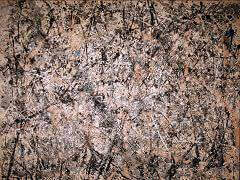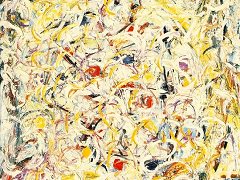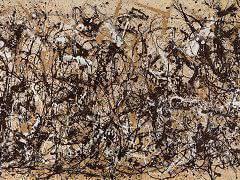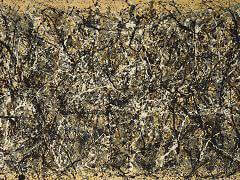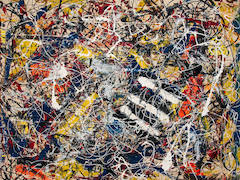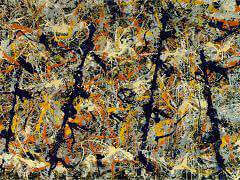Untitled (4), 1944-45 by Jackson Pollock

First-generation Abstract Expressionist painters lacked the opportunities for printmaking that would emerge in America in the late 1950s and 1960s with professional workshops and publishers. Jackson Pollock, however, managed to make prints intermittently throughout his career by taking advantage of occasions that presented themselves and by availing himself of the skills of mentors and other acquaintances who were familiar with techniques and had access to facilities. Since most of his lithographs, engravings, and screenprints were experimental and did not result in standardized editions, this aspect of his work is hardly known. In fact, the methodical nature of printmaking seems contrary to the image of Pollock as a wild man pouring paint on canvas in a kind of private performance.
Pollock's prints, nearly fifty compositions in all, went through evolving states, trial proofs, variant inking and uses of paper, and hand additions. The work illustrated here comes from a group of eleven plates he prepared at Atelier 17, a printing facility established by Stanley William Hayter in Paris and relocated to New York during World War II. It was there that exiled European artists gathered and introduced the principles of Surrealism to their young American counterparts. Hayter himself encouraged a method of engraving that allowed for a spontaneous articulation of line resembling "automatism," an unfettered Surrealist drawing technique in which thoughts and desires deep in the subconscious were prompted to the surface.
Pollock's engravings reflect his absorption not only of automatist drawing, but also of totemic imagery of the American Southwest, mythic archetypes from his Jungian psychoanalysis, and the work of such artists as Joan Miro and Pablo Picasso. This print is a quintessential example of that realm between representation and abstraction occupying him in the mid-1940s and ultimately leading to the totally abstract, linear skeins of his most celebrated canvases.



